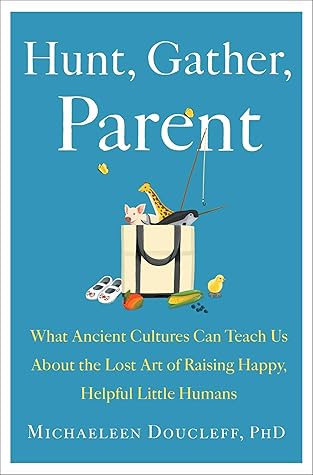More on this book
Community
Kindle Notes & Highlights
Read between
December 4, 2023 - March 3, 2024
Tool #4: Take the Child Outside
We need to show them how calmness works, over and over again, before we can expect them to master the concept.
Everyday Tool #3: Parent with Questions
The next time your toddler or small child acts cranky or demanding, use the responsibility tool and try putting them to work.
• Use responsibilities as rewards.
Some American parents have expressed concern with the idea of “scaring” a child into complying or being cooperative. I had the same worry, but the point isn’t to terrify the child and give them nightmares. The point is to get the child to think, to encourage a certain behavior, and to open up a discussion about a cultural value.
If you find yourself balking at the “scare factor” of this tool, as I did, you might consider that in Western culture, we also “scare” children into behaving. Children can become afraid of their parents’ anger or punishments. This is what happened during my childhood; I behaved because I feared my father’s anger. To be honest, I would rather Rosy be afraid of a “refrigerator monster” or the “spiders in a dress” than fear me or her father.
Here are a few popular stories in our house: 1. Sharing Monster. The Sharing Monster lives in a tree outside the kitchen window. When little kids don’t share, he grows bigger and bigger. Eventually, he could come out, snatch you, and take you up in the tree for seven whole nights. And do you know what he feeds little kids? Nothing but cauliflower and brussels sprouts. 2. Yelling Monster. He lives in the ceiling and listens through the light fixtures. If little kids yell too much or make too many demands, he comes down through the lights and snatches you away. And just to be clear, the yelling
...more
Once the tension is released through play, the problematic behavior often fades away on its own,
converting problems into play and discipline into practice.
In fact, many parents in hunter-gatherer communities go to great lengths not to tell children (or adults) what to do. This doesn’t mean that parents don’t pay attention, or don’t care what children do. Oh no! It’s the opposite. A parent—or another caretaker—is definitely watching.
when children don’t have enough autonomy, they often feel powerless over their lives. “Many [American] kids feel that way all the time,” Bill and Ned write in The Self-Driven Child. That feeling causes stress, and over time, that chronic stress can turn into anxiety and depression. Lack of autonomy is likely a key reason for the high prevalence of anxiety and depression among American children and teenagers,
Try three commands per hour.
Stop being a ventriloquist.
Let children handle their own arguments.
Step back. Sit down somewhere, pull out a book (or work), and relax. Let the child explore autonomously.
Form an invisible safety net. If the child goes near one of the dangers, start watching more closely. The more time they spend near the danger, the closer you watch. Resist the urge to run over to the child or scream a warning. Wait and watch. If the child seems interested in the danger, calmly walk over and begin to train them about that danger (e.g., for a sharp object, say, “Sharp. Ow. That would hurt,” gently and calmly). If the child already knows about the danger, remind them of the consequences (e.g.,
Build a MAP. That’s my own acronym for “multi-age playgroup” or “mixed-age playgroup.”
Tolerate your relatives (or learn to value their contributions).
Togetherness: We did bedtime together. Encourage: I encouraged Rosy to go to sleep instead of forcing her at a particular time. Autonomy: Rosy decided, on her own, when to go upstairs to go to sleep. Minimize interference: Instead of controlling Rosy’s behavior, I did what was minimally required to help her learn a valuable life skill.
think the same is true of children and kindness. Once you slow down and stop trying to change a child’s behavior so much, your sensitivity for their love grows by volumes. You see the child rushing over to help her friend who fell off her bike; you see the child collecting limes from a tree for dinner; and you see all the helpfulness in her eyes when she grabs the spatula from your hands and says, “Mama, that’s not how you flip pancakes. Here, let me show you how.”


